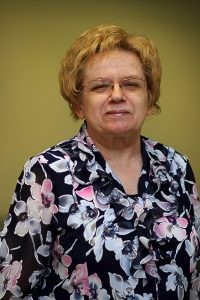Keynote Speaker

Prof. Maria Wacławek
Ecological Chemistry and Engineering Society, PolandEuropean Academy of Sciences and Arts, Austria
Speech Title: Application of Active Biomonitoring with the Use of Mosses for the Assessment of Air Pollution in Urban Areas
Abstract: Air pollution is one of the major problems, because it affects not only the world of fauna and flora, but also people themselves. There is a lack of awareness in society about the level of pollution of atmospheric aerosol, which is the result of occupational and recreational activities of people. A quick, cheap and easy way to study the state of the environment is to use biomonitors - living organisms that indicate the level of environmental pollution.
The objective of this study was to evaluate air pollution in urban areas using three moss species: Pleurozium schreberi, Sphagnum fallax and Dicranum polysetum. The experiments involved the analysis of air pollution by selected elements during the launching of fireworks on New Year's Eve, the activity of a car workshop and the comparison of pollution from the smoke of different tobacco products. The presented examples indicate the importance of measuring and controlling vital parameters of mosses (e.g. chlorophyll content, photosynthetic activity) during exposure in order to be able to talk about biomonitors - living organisms indicating air quality. The influence of exposure conditions and environmental factors most influences the quality of the result in biomonitoring studies. On the other hand, human activity (based on the practical examples above) indicates the importance of performing biomonitoring studies analyzing air quality and thus provides opportunities to make the public aware of their impact on atmospheric aerosol contamination by selected analytes.
It was shown that of the three species analyzed, Pleurozium schreberi moss is the most suitable for monitoring air pollution in urban areas. It works well with both a few days and several months of exposure to study air pollution in a given area. It is resistant to changing exposure conditions and retains its viability under environmental stress. The moss Sphagnum fallax, due to its peat characteristics and the need to function in a moist environment, should only be used in areas where it will have adequate access to water. Dicranum polysetum, on the other hand, should be included in biomonitoring studies for monitoring mercury pollution, where it is the best accumulator of this element compared to other species.
Biography: Prof. dr hab. inż. Maria Wacławek is a retired Professor at the Institute of Environmental Engineering and Biotechnology at the University of Opole, Poland.
She is an elected Academician of the European Academy of Sciences and Arts, Salzburg, Austria and an independent EU expert and reviewer on PV Projects in Brussels, European Commission.
Prof. Maria Wacławek is a President of the Society of Ecological Chemistry and Engineering, Opole, PL (website: ecesociety.com) and a Chairperson of the Organising Committee of Annual Ecological Conferences: Central European Conference ECOpole (1995 - ). In the last 12 years, at the Conferences, opening lectures were delivered by 5 Nobel Prize Winners.
She is Editor-in-Chief of two journals: Ecological Chemistry and Engineering S. Its IF (for 2022, WoS) is 1.9 and Chemistry-Didactics-Ecology-Metrology – its IF (for 2022, WoS) is 0.4.
Her research interests include environmental monitoring, biomonitoring and photovoltaics.
